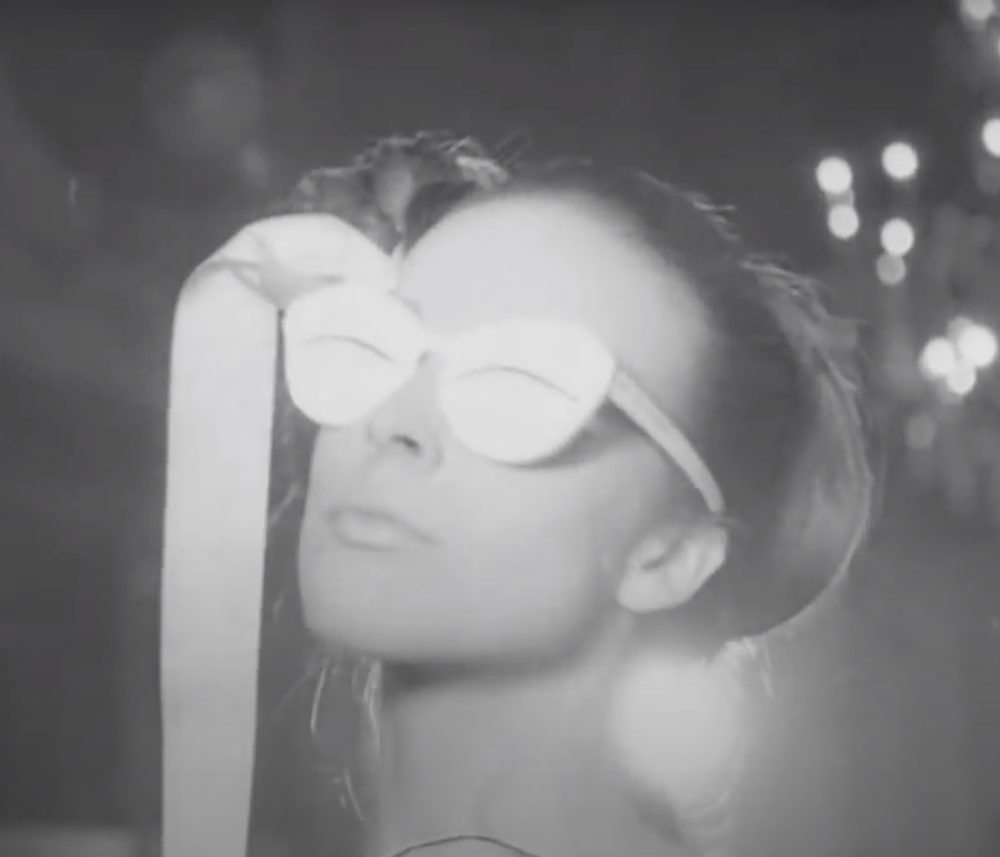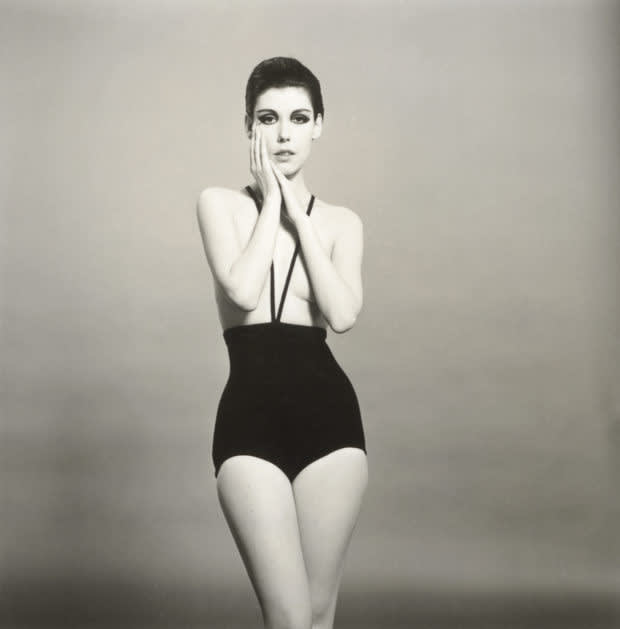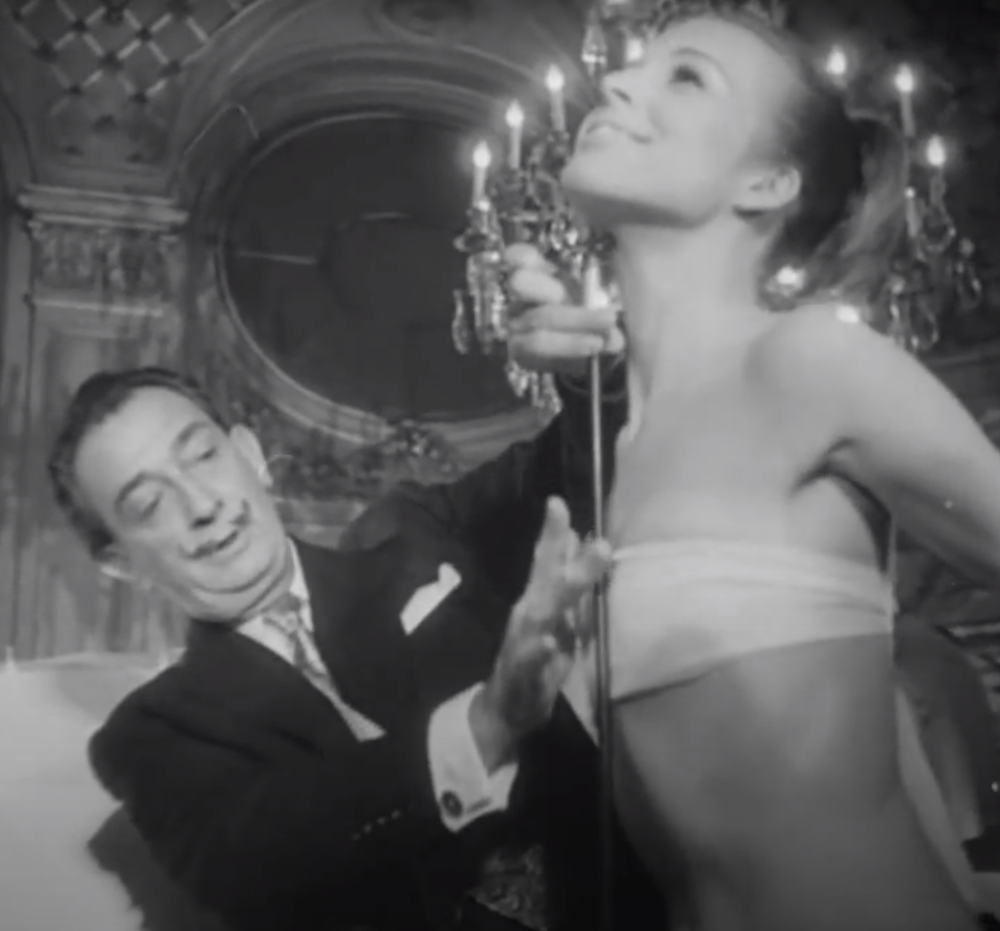
Salvador Dalí
With model wearing his swimwear design, 1965
Salvador Dali was no stranger to the fashion world. From designing surrealist cover art for Vogue magazine, to his lifelong friendship and creative partnership with Italian couturier Elsa Schiaparelli – many of the duo’s creations are considered today as preeminent examples of early 20th century art and fashion collaborations – he was never shy of imbuing his surrealist sensibility on mediums outside the traditional confines of fine art.
Despite many of Dali’s fashion-related ventures receiving critical acclaim, such as his ongoing work with Schiaparelli and a 1950 collaboration with Christian Dior, other lesser known projects have ultimately disappeared into the creative abyss of the artist’s vast oeuvre. One such example being a 1965 surrealist swimwear collection titled “Nightmare Beachwear.”
Salvador Dalí
With model wearing his swimwear design, 1965
Salvador Dalí
With model wearing his swimwear design, 1965
Following his success co-designing couture ensembles and avant-garde accessories, Dali conjured up ideas for a collection of surreal bathing suits and beach apparel. In search of a partner for his new venture, the artist traveled to Wisconsin to meet with clothing manufacturer Jack A. Winter, founder of Jack Winter Inc., who started producing men’s trousers in the 1930s and later became popular as a designer of women’s sportswear.
Salvador Dali Swimwear
"Coming Back" sketch
Salvador Dali Swimwear
"Dalinienne Empire" sketch
Salvador Dali Swimwear
"Extra Flat, a Peine Ametiste" sketch
Salvador Dali Swimwear
"Fifty-Fifty" sketch
Salvador Dali Swimwear
"Tennis" sketch
Salvador Dali Swimwear
"Yellow Astronaut Clerical" sketch
The duo reached an agreement and months later Dali’s first collection was presented during a pool-side fashion show in Paris. Not much still exists from the artist’s brief venture into the world of swim apart from six sketches of his surrealist collection and a brief archival video of the May 1965 presentation.

Salvador Dalí
Swimwear Presentation, 1965

Salvador Dalí
Swimwear Presentation, 1965

Salvador Dalí
Swimwear Presentation, 1965
Shot in black and white, a voice opens the short film with a thesis of sorts, stating, “What swimwear cries out for is something really new, a breakthrough, to get away from the eternal one piece and bikini.” Despite the narrator’s compelling statement, the early 1960s were in fact a wildly experimental time in the world of swimwear, following the debut of synthetic materials in fashion and radical, new-age designs, such as Rudi Gernreich’s 1964 topless bathing suit for women dubbed the “mono-kini”.

Rudi Gernreich
Mono Kini, 1964
As the film progresses it features a compilation of highlight clips from show, such as one model sauntering down the runway with eyes painted over her breasts and another carrying an inflatable baseball catcher on her back. One bizarre scene even captures Dali measuring the flatness of a model’s chest which appears to be bound tightly by fabric.

Salvador Dalí
Swimwear Presentation, 1965
While it is unknown what came about of the duo’s partnership following the Paris presentation, whether Winter applauded Dali’s showmanship or pulled out of their agreement due to the unwearable nature of the artist’s eccentric designs, it is said, at least, that the inflatable props of Dali’s ensembles did have life elsewhere – as pool toys at the artist’s home in Cadaqués, Spain.



